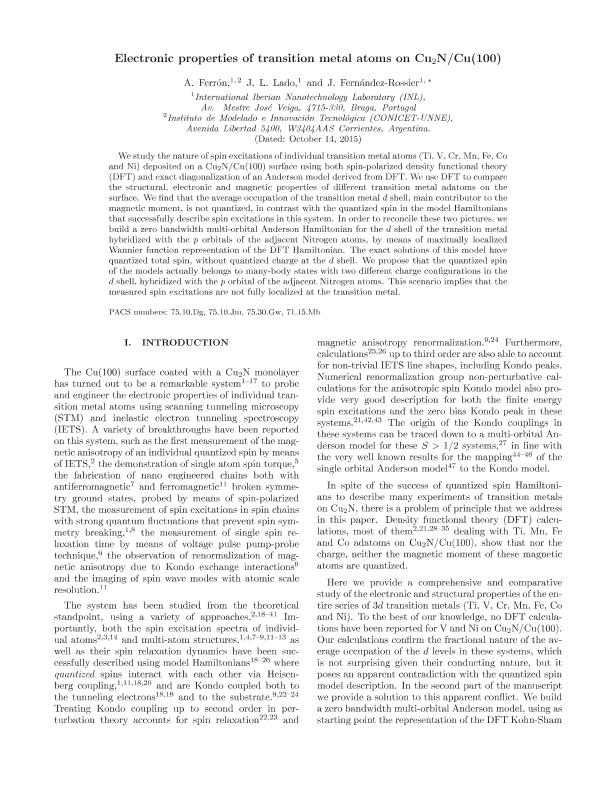Artículo
Electronic properties of transition metal atoms on Cu2N/Cu(100)
Fecha de publicación:
11/2015
Editorial:
American Physical Society
Revista:
Physical Review B: Condensed Matter And Materials Physics
ISSN:
1098-0121
e-ISSN:
1550-235X
Idioma:
Inglés
Tipo de recurso:
Artículo publicado
Clasificación temática:
Resumen
We study the nature of spin excitations of individual transition metal atoms (Ti, V, Cr, Mn, Fe, Co, and Ni) deposited on a Cu2N/Cu(100) surface using both spin-polarized density functional theory (DFT) and exact diagonalization of an Anderson model derived from DFT. We use DFT to compare the structural, electronic, and magnetic properties of different transition metal adatoms on the surface. We find that the average occupation of the transition metal d shell, main contributor to the magnetic moment, is not quantized, in contrast with the quantized spin in the model Hamiltonians that successfully describe spin excitations in this system. In order to reconcile these two pictures, we build a zero bandwidth multi-orbital Anderson Hamiltonian for the d shell of the transition metal hybridized with the p orbitals of the adjacent nitrogen atoms, by means of maximally localized Wannier function representation of the DFT Hamiltonian. The exact solutions of this model have quantized total spin, without quantized charge at the d shell. We propose that the quantized spin of the models actually belongs to many-body states with two different charge configurations in the d shell, hybridized with the p orbital of the adjacent nitrogen atoms. This scenario implies that the measured spin excitations are not fully localized at the transition metal.
Archivos asociados
Licencia
Identificadores
Colecciones
Articulos(IMIT)
Articulos de INST.DE MODELADO E INNOVACION TECNOLOGICA
Articulos de INST.DE MODELADO E INNOVACION TECNOLOGICA
Citación
Ferron, Alejandro; Lado, Jose Luis; Fernandez Rossier, Joaquín; Electronic properties of transition metal atoms on Cu2N/Cu(100); American Physical Society; Physical Review B: Condensed Matter And Materials Physics; 92; 17; 11-2015; 174407-1 174407-11
Compartir
Altmétricas




